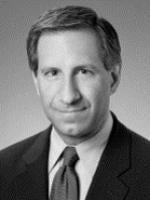In Lorenzo v. Securities & Exchange Comm., No. 17-1077, 2019 WL __________ (U.S. Mar. 27, 2019), the Supreme Court of the United States (Breyer, J.) held that an individual who did not “make” a false or misleading statement within the meaning of Janus Capital Group, Inc. v. First Derivative Traders, 564 U.S. 135 (2011) (blog article here), but instead disseminated it to potential investors with intent to defraud, can be held to have employed a scheme to defraud and/or engaged in an act, practice or course of business to defraud in violation of subsections (a) and (c) of Securities and Exchange Commission (“SEC”) Rule 10b-5, 17 C.F.R. § 240.10b-5. This decision broadens the scope of primary liability under Rule 10b-5 beyond those who make false and misleading statements to include those who knowingly “disseminate” (i.e., communicate to potential investors) such false or misleading statements. Although this decision involved an SEC enforcement action, it is likely to be invoked by plaintiffs in private securities litigation to expand the scope of named defendants beyond the issuer and individuals directly responsible for making public statements on the issuer’s behalf.
The relevant facts were not in dispute. The defendant represented himself as “Vice President-Investment Banking” for a registered broker-dealer in Staten Island, New York. In 2009, he sent emails to prospective investors at the direction of his boss, who supplied the content and approved the messages. Those emails contained false and misleading information about the client’s business. Defendant allegedly knew that.
The SEC brought an enforcement action. It determined that defendant violated Rule 10b-5 (among other provisions of the federal securities laws), issued a $15,000 fine and bar order. Defendant appealed. He argued, inter alia, that he could not be held liable under Rule 10b-5(b), which prohibits (in pertinent part) “mak[ing] any untrue statement of a material fact,” because he was not the “maker” of the statements in the emails at issue within the meaning of Janus Capital. The United States Court of Appeals for the District of Columbia Circuit agreed. See Securities & Exchange Comm. v. Lorenzo, 872 F.3d 578 (D.C. Cir. 2017). The Court of Appeals nevertheless held that defendant’s conduct violated Rule 10b-5(a) and (c) which prohibit (in pertinent part) “employ[ing] any device, scheme, or artifice to defraud” and “engag[ing] in any act, practice, or course of business which operates or would operate as a fraud or deceit.” The D.C. Circuit’s decision conflicted with decisions in other Circuits holding that alleged misconduct involving misstatements in violation of Rule 10b-5(b) cannot also give rise to “scheme liability” under Rule 10b-5(a) and (c). See, e.g., WPP Luxembourg Gamma Three Sarl v. Spot Runner, Inc., 655 F.3d 1039 (9th Cir. 2011).
The Supreme Court affirmed the decision of the D.C. Circuit. In its ruling, the six-justice majority (Kavanaugh, J., did not participate) relied heavily upon the plain language of the Rule and dictionary definitions of its terms. “It would seem obvious that the words in [Rule 10b-5(a) and (c)] are, as ordinarily used, sufficiently broad to include within their scope the dissemination of false or misleading information with the intent to defraud.” The Court also seemed influenced by its view of the egregiousness of the facts of the case:
[W]e see nothing borderline about this case, where the relevant conduct (as found by the [SEC]) consists of disseminating false or misleading information to prospective investors with the intent to defraud. And while one can readily imagine other actors tangentially involved in dissemination—say, a mailroom clerk—for whom liability would typically be inappropriate, the petitioner, in this case, sent false statements directly to investors, invited them to follow up with questions, and did so in his capacity as vice president of an investment banking company.
The dissent (Thomas, J., in which Gorsuch, J., joined) argued that the majority’s decision undermined the limitations on the scope of securities liability established in, among other cases, Janus Capital and Central Bank of Denver, N. A. v. First Interstate Bank of Denver, N. A., 511 U.S. 164 (1994) (no private right of action for aiding and abetting securities fraud). The majority commented that “we can assume that Janus would remain relevant (and preclude liability) where an individual neither makes nor disseminates false information—provided, of course, that the individual is not involved in some other form of fraud” (emphasis in original). With respect to the blurring of the distinction between primary and secondary (aiding and abetting) liability, the majority acknowledged an overlap between the two types of liability:
Those who disseminate false statements with intent to defraud are primarily liable under Rules 10b-5(a) and (c) . . . , even if they are secondarily liable under Rule 10b-5(b). [Defendant] suggests that classifying dissemination as a primary violation would inappropriately subject peripheral players in fraud (including him, naturally) to substantial liability. We suspect the investors who received [his] e-mails would not view the deception so favorably. And as Central Bank itself made clear, even a bit participant in the securities markets “may be liable as a primary violator under [Rule] 10b-5” so long as “all of the requirements for primary liability . . . are met.”
The dissent also noted that the Court’s interpretation that Rule 10b-5(a) and (c) encompasses conduct addressed more directly in Rule 10b-5(b) effectively rendered subsection (b) superfluous. Here, too, the majority seemed unconcerned, given the breadth of the plain language of the Rule and the salutary purposes of the federal securities laws.
The Court’s decision in Lorenzo expands the scope of primary liability under Rule 10b-5. Although the majority did limit the expansion in scope in this case to those who “disseminate” false statements, plaintiffs in private securities litigation likely will invoke Lorenzo as a basis to add as defendants individuals and entities alleged to have participated in the fraudulent scheme under Rule 10b-5(a) and (c) through activities besides “dissemination.” We note that although the Court did not explain the legal basis for which it would be “inappropriate” to hold a “mailroom clerk” or other “tangential” persons primarily liable for disseminating false or misleading statements made by others, that basis would appear to be the separate requirement set forth in Stoneridge Investment Partners, LLC v. Scientific-Atlanta, Inc., 552 U.S. 148 (2008) (blog article here), that investors plead and prove they (or the market generally) were aware of the deceptive conduct at issue, i.e., they knew of and relied upon the fraudulent acts of the “mailroom clerk” or other “tangential” participants. Lower courts will need to grapple with these issues left open by the Supreme Court’s decision in this case.



 />i
/>i

